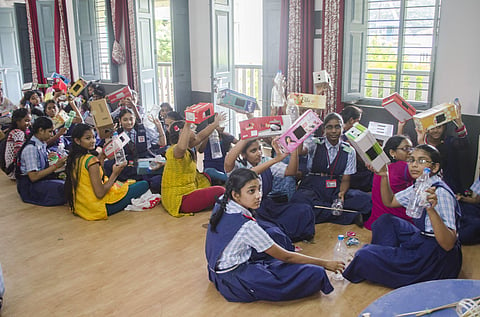

Rajinikanth might have been the hero of Robot 2.0, but there is no denying the fact that the message sent across by Akshay Kumar's character Pakshi Raja (a name that translates to 'king of birds') about radiations released from that of mobile phones and towers being a major threat to the wildlife struck a chord with many. S Ravi Kanth Reddy from Vishakhapattanam in Andhra Pradesh also seems to agree that mass entertainers like Robot 2.0 are capable of educating people on issues that they would otherwise ignore.
It's World Sparrow Day and Ravi Kanth tells us why this day is not as big as World Earth Day (April 22) and World Environment Day (June 5) yet even though it is no less important. "Though people are aware of the declining number of sparrows and birds they are yet to know its significance and the reasons which have indirectly resulted in the decline of the species too," says Ravi Kanth, Founder President, MEECONS (Mother Earth Environmental Consciousness Society).
The sparrows have lost their homes and Ravi Kanth is teaching people how to help rehabilitate the species and make amends to the disrupted food chain. To begin with, you can make a nest yourself. And it is quite easy. A simple cardboard box should do the trick! "We conduct workshops in which we teach the participants how to make shelters for sparrows using shoe-boxes. A feeder can be made using an old plastic bottle as well. All it takes is 25 minutes of your time. The shelter must be kept under a shade and should comparatively have less human interference," says Ravi Kanth. Their workshop not only offers the making of such products but also tells people why they are essential to rebuilding a food chain. "We also tell them what to feed and the basic dos and don'ts. Through repeated trials, we realised that the sparrows liked to feed on pearl millet. The water can be changed once in two days and don't forget to check for algal growth. Change the water if it seems to be a bit too much," Ravi Kanth informs.
When a species is lost there are only two things that might have happened, explains Ravi Kanth. "Either the species is wiped out naturally, or it is wiped out due to human interference. In the case of sparrows, it is human interference," he says. But is it just the mobile towers? Ravi Kanth says it's much more complicated than that. "A few decades back our architecture was different. The space between the roof was used by the birds to build their nest. Now, cramped up spaces and designer homes, the construction does not give space for these birds. Also, with an increase in the use of pesticides, the population of not only sparrows but the entire food chain is disturbed," says Ravi Kanth.
But he says it is never too late to find a sustainable solution. Though they do not have an accurate count, Ravi Kanth states that the population of sparrows have increased in Vishakhapattanam after the Hudhud Cyclone in 2014. "People have started planting trees in huge numbers. Sparrows usually prefer bushy trees, and hence the count has increased gradually. Realising the importance of sparrows in the food chain, people have also started making nests for these birds. This had a positive impact on their population," says the 35-year-old.
